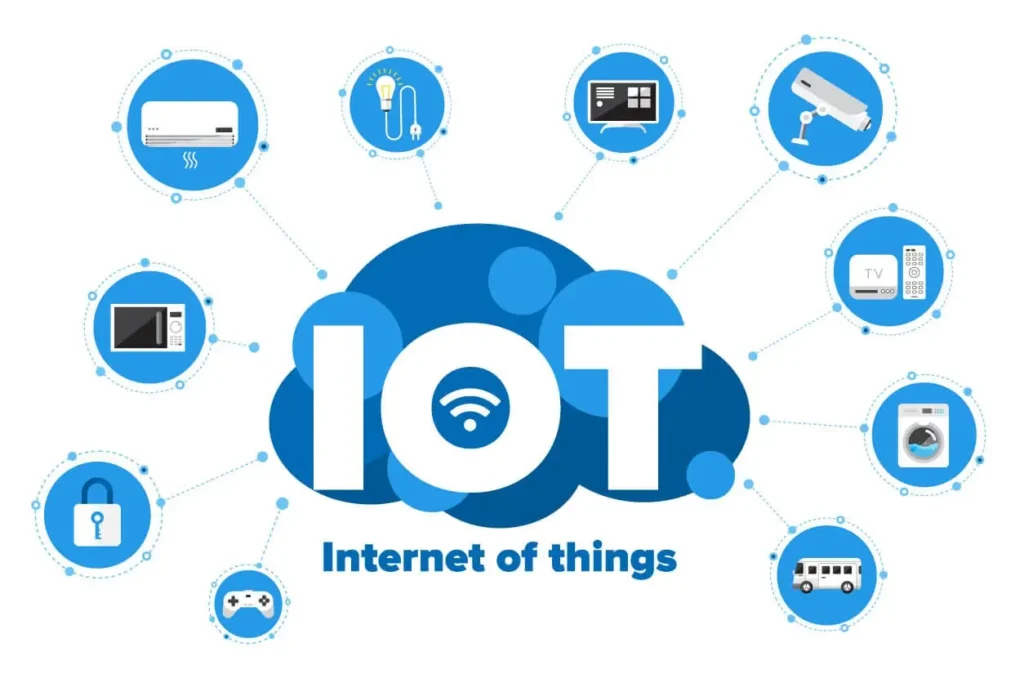The advent of 5G technology marks a significant leap forward in the realm of telecommunications, promising faster speeds, lower latency, and more reliable connections. This fifth generation of wireless technology is poised to transform various industries, with the Internet of Things (IoT) and smart cities standing out as two of the most profoundly affected areas. In this blog, we’ll explore how 5G is revolutionizing IoT and smart cities, examining the benefits, challenges, and future prospects of this game-changing technology.
Understanding 5G Technology
5G, or the fifth generation of mobile networks, offers several key advancements over its predecessors:
– Higher Data Speeds: With speeds up to 100 times faster than 4G, 5G can deliver data at up to 10 Gbps.
– Low Latency: Latency, or the time it takes for data to travel from one point to another, is significantly reduced in 5G networks, potentially reaching as low as 1 millisecond.
– Increased Capacity: 5G can connect a vast number of devices simultaneously, making it ideal for dense urban environments.
– Enhanced Reliability: Improved network reliability ensures consistent and dependable connectivity, even in high-demand scenarios.
These features make 5G a perfect fit for IoT applications and the development of smart cities.
The Impact of 5G on IoT
The Internet of Things (IoT) encompasses a vast network of interconnected devices that communicate and share data with each other. The capabilities of 5G are set to supercharge IoT in several ways:
1. Enhanced Device Connectivity
5G’s increased capacity allows for the connection of a far greater number of devices within a given area. This is crucial for IoT, where devices such as sensors, cameras, and smart appliances are proliferating rapidly. With 5G, millions of devices can be connected without overloading the network, ensuring smooth and efficient communication.
2. Real-Time Data Processing
Low latency is one of 5G’s most significant advantages. This enables real-time data processing and decision-making, which is essential for applications such as autonomous vehicles, industrial automation, and healthcare monitoring. Devices can send and receive data almost instantaneously, facilitating immediate responses to changing conditions.
3. Improved Energy Efficiency
5G networks are designed to be more energy-efficient, which is beneficial for IoT devices that often rely on battery power. Longer battery life means that devices can operate for extended periods without needing frequent recharging or replacement, reducing maintenance costs and increasing reliability.
4. Enhanced Security
The improved security protocols inherent in 5G networks provide a more secure environment for IoT devices. This is particularly important as the number of connected devices grows, increasing the potential attack surface for cyber threats. Enhanced security measures help protect sensitive data and ensure the integrity of IoT networks.
The Impact of 5G on Smart Cities
Smart cities leverage IoT technologies to enhance the quality of life for their residents, improve sustainability, and optimize urban services. The introduction of 5G is set to accelerate the development and deployment of smart city initiatives in several key areas:
1. Intelligent Transportation Systems
5G enables the real-time communication required for intelligent transportation systems (ITS). This includes traffic management, autonomous vehicles, and public transportation systems. For example, 5G can support vehicle-to-everything (V2X) communication, allowing cars to communicate with each other and with traffic infrastructure, reducing accidents and improving traffic flow.
2. Smart Infrastructure
5G supports the deployment of smart infrastructure, including energy grids, water management systems, and public utilities. Smart grids, for instance, can monitor energy consumption in real-time, optimize distribution, and reduce waste. Similarly, smart water management systems can detect leaks and monitor water quality, ensuring efficient and safe water distribution.
3. Public Safety and Emergency Services
Enhanced connectivity and real-time data processing capabilities of 5G can significantly improve public safety and emergency response. Smart surveillance systems, equipped with high-definition cameras and sensors, can monitor public spaces for suspicious activities and alert authorities immediately. Additionally, 5G can facilitate faster and more coordinated responses to emergencies, such as natural disasters or medical incidents.
4. Environmental Monitoring
5G-powered IoT devices can provide continuous monitoring of environmental conditions, such as air quality, noise levels, and weather patterns. This data can be used to develop strategies for reducing pollution, mitigating the effects of climate change, and improving overall urban living conditions.
5. Enhanced Public Services
Smart cities aim to provide better public services to their residents, and 5G plays a pivotal role in this. For example, smart waste management systems can optimize collection routes based on real-time data, reducing costs and environmental impact. Similarly, smart lighting systems can adjust brightness based on pedestrian activity, enhancing energy efficiency and public safety.
Challenges and Considerations
While the potential benefits of 5G for IoT and smart cities are immense, there are several challenges and considerations to keep in mind:
1. Infrastructure Investment
The deployment of 5G requires significant investment in infrastructure, including the installation of new base stations and upgrading existing networks. This can be a substantial financial burden for cities and telecom providers.
2. Spectrum Availability
The availability of spectrum for 5G networks is another critical issue. Governments and regulatory bodies need to allocate sufficient spectrum to support the widespread adoption of 5G technology.
3. Security and Privacy
As the number of connected devices increases, so does the potential for cyber threats. Ensuring robust security and privacy measures are in place is essential to protect sensitive data and maintain public trust.
4. Standardization and Interoperability
The lack of standardized protocols and interoperability between different IoT devices and platforms can hinder the seamless integration of 5G technology. Developing universal standards is crucial for the widespread adoption of 5G-enabled IoT solutions.
Conclusion
The impact of 5G technology on IoT and smart cities is profound, offering the potential to revolutionize urban living and create more efficient, sustainable, and livable environments. By enabling enhanced connectivity, real-time data processing, and improved security, 5G paves the way for innovative applications that can transform various aspects of city life. However, realizing this potential requires addressing challenges related to infrastructure, spectrum availability, security, and standardization. As cities and industries continue to embrace 5G, we can expect to see a new era of connectivity and smart solutions that will shape the future of urban living.

